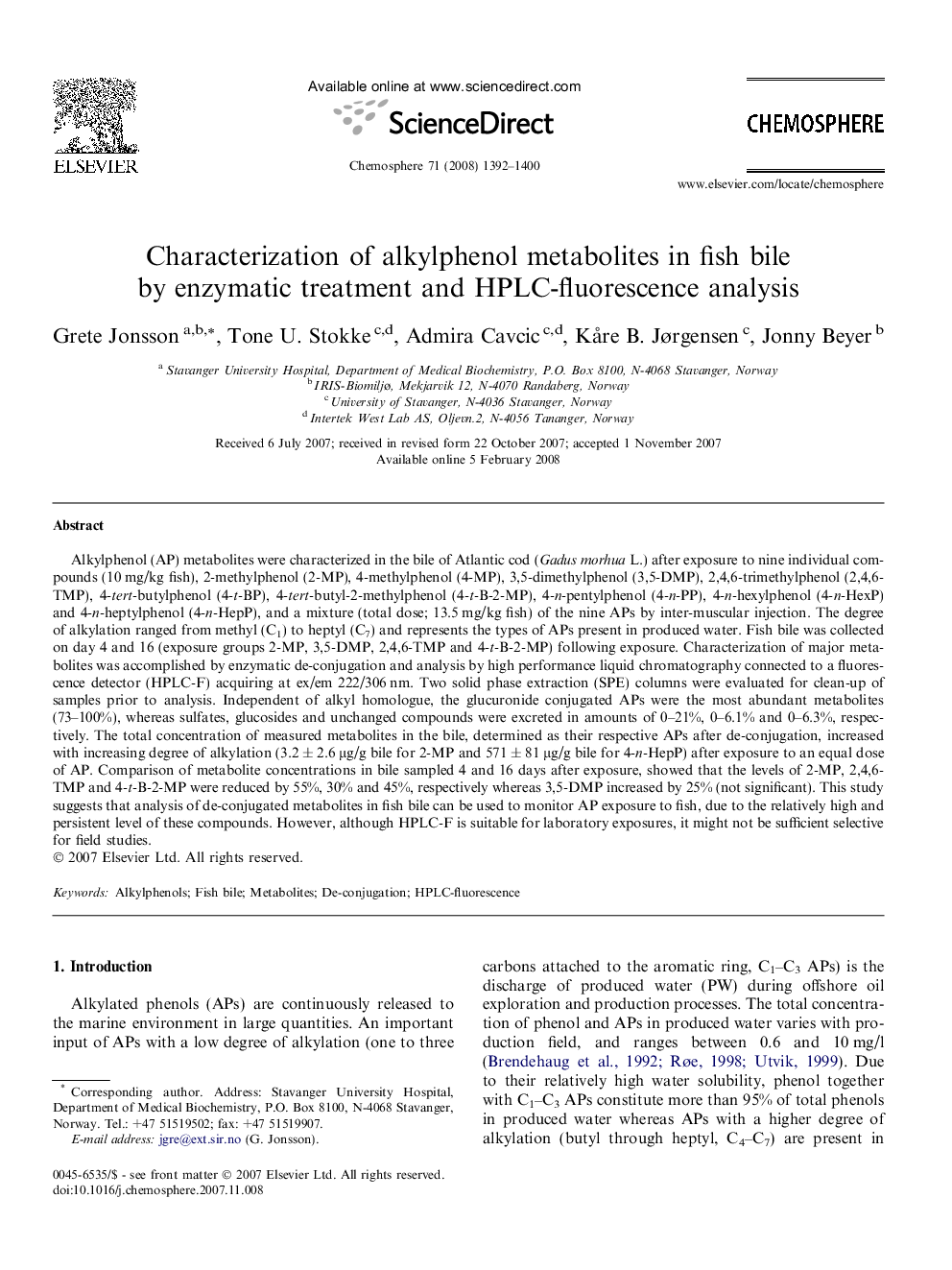| کد مقاله | کد نشریه | سال انتشار | مقاله انگلیسی | نسخه تمام متن |
|---|---|---|---|---|
| 4414272 | 1307706 | 2008 | 9 صفحه PDF | دانلود رایگان |

Alkylphenol (AP) metabolites were characterized in the bile of Atlantic cod (Gadus morhua L.) after exposure to nine individual compounds (10 mg/kg fish), 2-methylphenol (2-MP), 4-methylphenol (4-MP), 3,5-dimethylphenol (3,5-DMP), 2,4,6-trimethylphenol (2,4,6-TMP), 4-tert-butylphenol (4-t-BP), 4-tert-butyl-2-methylphenol (4-t-B-2-MP), 4-n-pentylphenol (4-n-PP), 4-n-hexylphenol (4-n-HexP) and 4-n-heptylphenol (4-n-HepP), and a mixture (total dose; 13.5 mg/kg fish) of the nine APs by inter-muscular injection. The degree of alkylation ranged from methyl (C1) to heptyl (C7) and represents the types of APs present in produced water. Fish bile was collected on day 4 and 16 (exposure groups 2-MP, 3,5-DMP, 2,4,6-TMP and 4-t-B-2-MP) following exposure. Characterization of major metabolites was accomplished by enzymatic de-conjugation and analysis by high performance liquid chromatography connected to a fluorescence detector (HPLC-F) acquiring at ex/em 222/306 nm. Two solid phase extraction (SPE) columns were evaluated for clean-up of samples prior to analysis. Independent of alkyl homologue, the glucuronide conjugated APs were the most abundant metabolites (73–100%), whereas sulfates, glucosides and unchanged compounds were excreted in amounts of 0–21%, 0–6.1% and 0–6.3%, respectively. The total concentration of measured metabolites in the bile, determined as their respective APs after de-conjugation, increased with increasing degree of alkylation (3.2 ± 2.6 μg/g bile for 2-MP and 571 ± 81 μg/g bile for 4-n-HepP) after exposure to an equal dose of AP. Comparison of metabolite concentrations in bile sampled 4 and 16 days after exposure, showed that the levels of 2-MP, 2,4,6-TMP and 4-t-B-2-MP were reduced by 55%, 30% and 45%, respectively whereas 3,5-DMP increased by 25% (not significant). This study suggests that analysis of de-conjugated metabolites in fish bile can be used to monitor AP exposure to fish, due to the relatively high and persistent level of these compounds. However, although HPLC-F is suitable for laboratory exposures, it might not be sufficient selective for field studies.
Journal: Chemosphere - Volume 71, Issue 7, April 2008, Pages 1392–1400